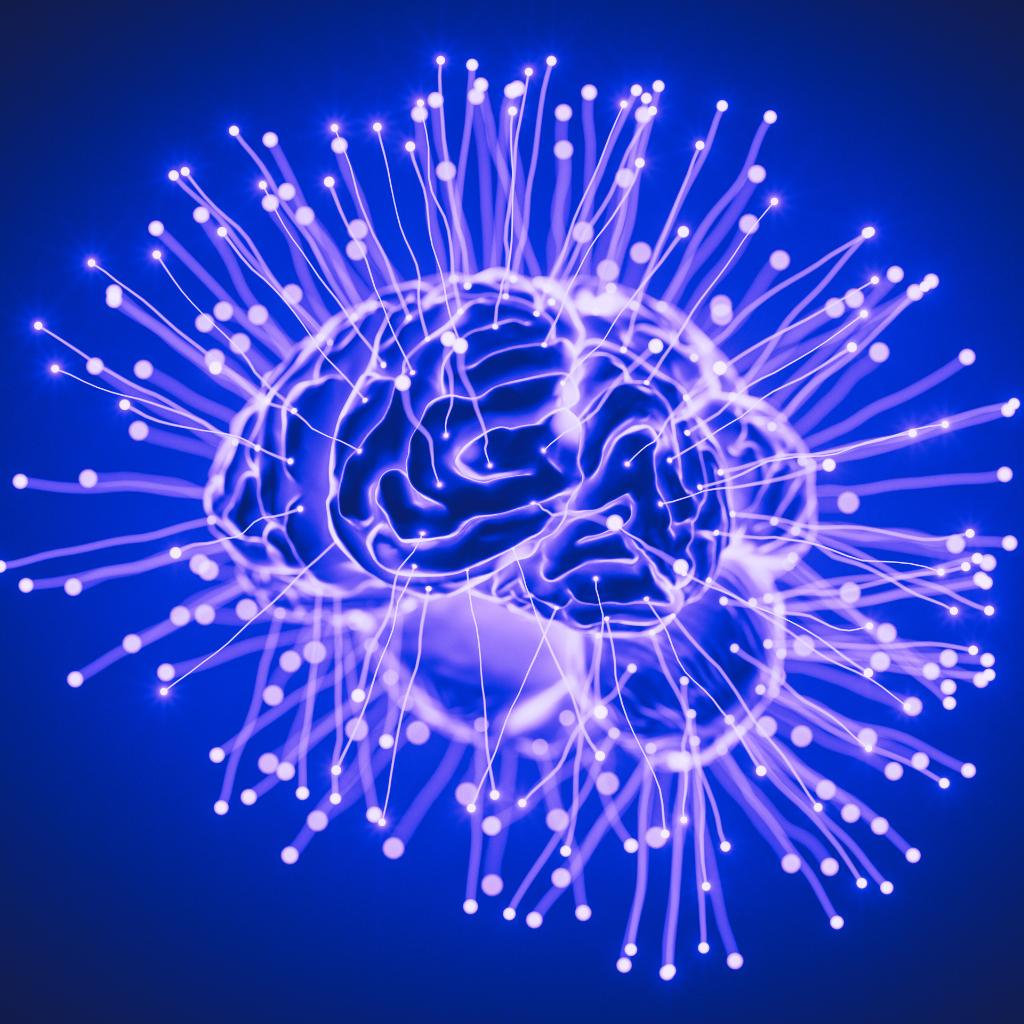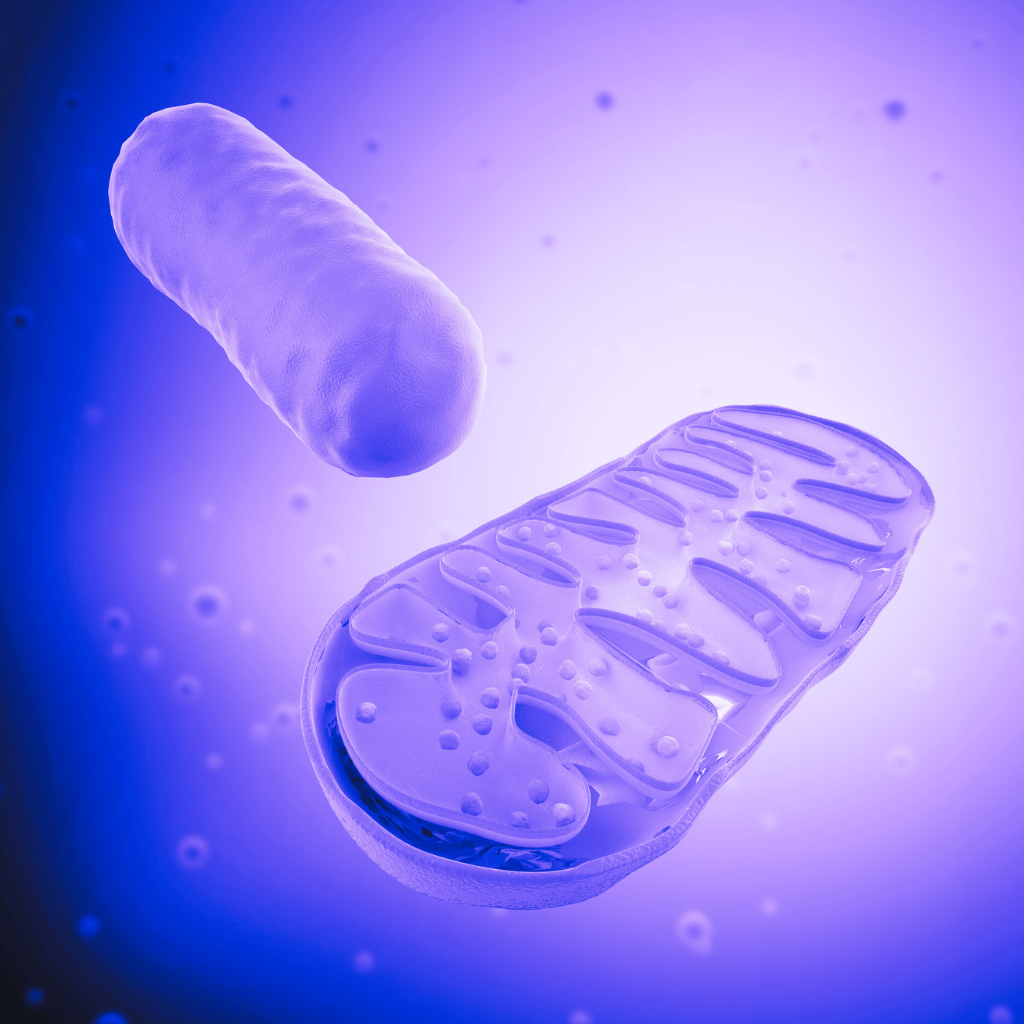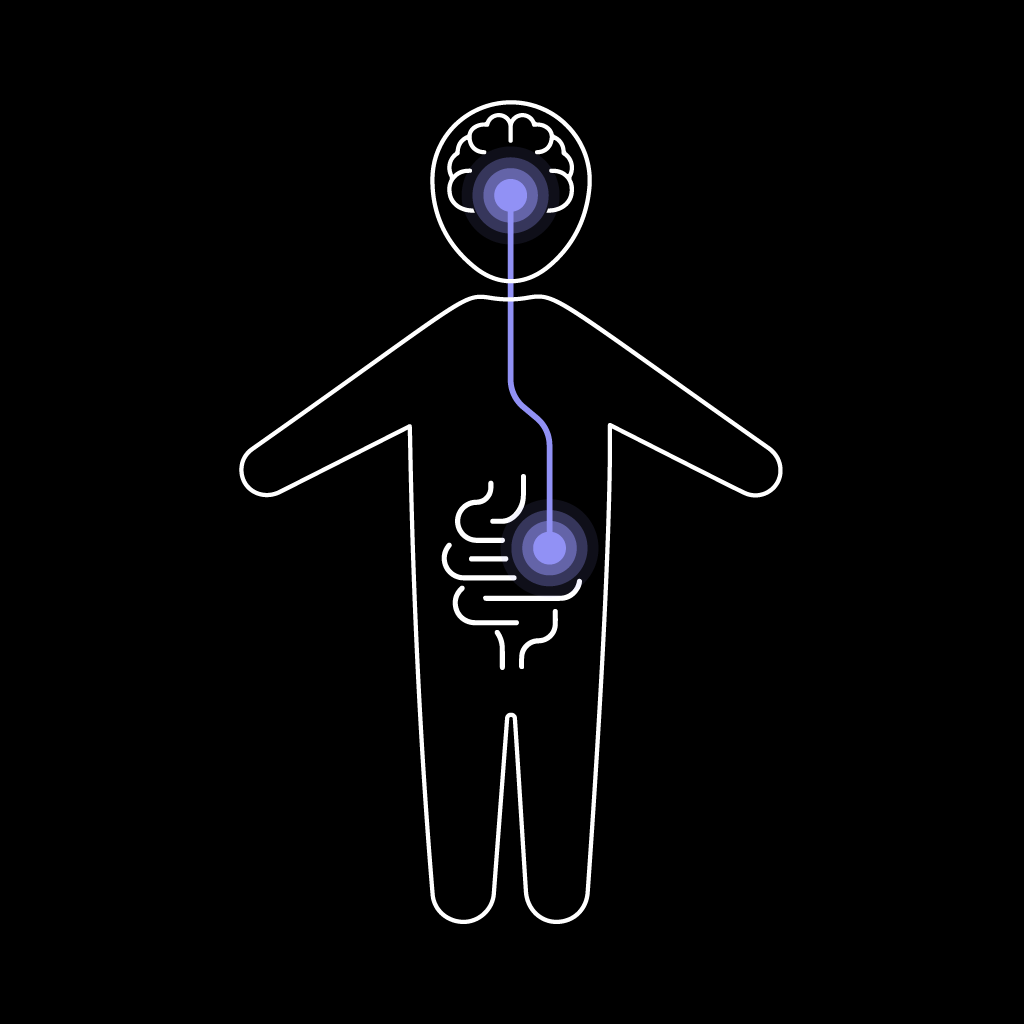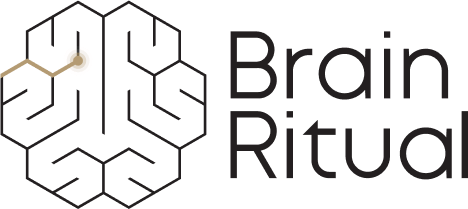
You Have Migraine. We Have Science.
Understand how Brain Ritual® works
If you've tried migraine medications, alternative approaches, or single-nutrient supplements but still struggle to find relief, you're not alone.
We believe that better migraine management starts with understanding its root causes. More and more research suggests that migraines are not just neurological—they are also deeply connected to metabolism.
The Link Between Metabolism and Migraines

Your Brain Needs Energy
Your brain requires a constant energy supply. Despite making up only 2% of your body's weight, it consumes about 20% of your total energy. This is because your brain is always active, even when you're resting, controlling essential functions like breathing, circulation, and processing information.
If energy levels drop, the brain triggers emergency responses—and a migraine may be one of the most powerful warning signals. Studies show that during a migraine episode, brain energy levels are significantly lower than in healthy individuals (1).
Simply put: When the brain runs low on fuel, it sends a distress signal—and that signal could be a migraine.

Why Eating Regularly Isn’t Always Enough
Many people assume that eating regularly is enough to fuel the brain, but it's not that simple. The brain is selective about the types of energy it uses. Only three molecules can cross the blood-brain barrier and provide fuel:
- Glucose (the brain's primary fuel, but it can’t be stored for long and may not be efficiently used in some people with migraines)
- Lactate (used during exercise or metabolic stress)
- Ketone Bodies (a powerful alternative energy source, but usually not produced in large amounts on a typical diet)
Research shows that mitochondrial function—where the body's energy-producing structures don’t work efficiently—is linked to migraine (2,3,4). Many common migraine triggers, such as stress, poor sleep, and fasting, are connected to metabolism and energy production.
Common Migraine Triggers and Their Metabolic Connection
- Sleep Disruptions – Affect hormone and energy regulation.
- Hormonal Changes – Estrogen protects against oxidative stress; its decline before menstruation may increase migraine risk.
- Weather Changes – Low oxygen and extreme temperatures stress energy production.
- Exercise – Intense or prolonged exercise increases oxidative stress.
- Alcohol – Raises oxidative stress and impairs glucose production in the liver.
- Strong Scents – Certain chemicals impair mitochondrial function.
- Bright Light & Loud Noises – Increase oxidative stress in the brain.
- High Sugar Intake – Causes blood sugar fluctuations, triggering energy crashes.
- Fasting or Skipping Meals – Can lead to low brain energy levels.
Restoring Your Brain’s Energy Balance
Your body needs the right nutrients to support energy production (ATP). Just like a car needs fuel, oil, and air to run, your mitochondria need a range of nutrients to function optimally.

- D-Beta-Hydroxybutyrate – An efficient alternative energy source for the brain.
- Vitamin K2 – Supports bone and cardiovascular health.
- Vitamin A – Essential for vision and immune function.
- Vitamin C – Important for immune support and skin health.
- Boron – Supports bone health and cognitive function.
- Calcium – Essential for strong bones and teeth.
- Iodine – Necessary for thyroid function.
- Vitamin D – Crucial for bone health and calcium absorption.
- Vitamin E – Acts as an antioxidant protecting cells.
- Vitamin K1 – Necessary for blood clotting.
- Magnesium – Important for muscle and nerve function.
- Zinc – Supports immune function and wound healing.
- Selenium – Acts as an antioxidant and supports thyroid health.
- Vitamin B1 – Helps convert food into energy.
- Vitamin B2 – Supports energy production and skin health.
- Vitamin B3 – Essential for healthy skin and nervous system.
- Manganese – Important for bone formation and metabolism.
- Chromium – Supports blood sugar regulation.
- Molybdenum – Supports enzyme function.
- Vitamin B5 – Aids in energy production and hormone synthesis.
- Vitamin B7 (Biotin) – Supports healthy hair, skin, and nails.
- Vitamin B9 (Folate) – Important for DNA synthesis and cell growth.
- Vitamin B12 – Vital for nerve function and red blood cell production.
- Sodium & Potassium – Essential for fluid balance and nerve function.
- L-Carnitine – Supports energy production from fats.
- Coenzyme Q10 – Powerful antioxidant for cellular energy production.
- Taurine – Supports liver function.
- Glycine – Supports restful sleep and detoxification.
- Mixed Tocopherols – Provide antioxidant protection.
- Choline – Important for brain health and liver function.
- Pyridoxal-5'-Phosphate – Active form of Vitamin B6, supports metabolism.
- Ribose – Supports energy production and repair when demand is high.
- Allulose – Helps reduce metabolic stress.

Brain Ritual has been formulated with exactly these bioavailable and human-identical nutrients (over 30 of them!) that support mitochondrial function (= energy production) and provide an efficient energy source for the brain, human-identical ketone bodies.
Many ingredients of Brain Ritual® have been evaluated in clinical migraine studies (5-15) and the ketone bodies and their use in migraine are patent protected. (16)
How Brain Ritual Works
Brain Ritual is designed to deliver bioavailable, human-identical nutrients that support mitochondrial function and provide the brain with a reliable energy source.

Step-by-Step Benefits of Brain Ritual:
1. Immediate Energy Boost – Provides an alternative energy source for the brain, reducing energy deficits.
2. Nutrient Support – Delivers key vitamins, minerals, and cofactors essential for optimal brain function.
3. Antioxidant Protection – Reduces oxidative stress, a major factor in brain health.
4. Long-Term Energy and Migraine Support – Helps maintain consistent brain function and well-being.
Brain Ritual: A Science-Backed Medical Food Approach For Your Brain
Brain Ritual is not just another supplement. It is a medical food specifically formulated to meet the unique nutritional needs of migraine sufferers.
Let food be thy medicine.
Unlike drugs, Brain Ritual contains only ingredients which are generally considered safe, without major side effects.
First do no harm.
- Clinically Researched Ingredients – Many components of Brain Ritual have been studied in randomised controlled migraine trials , as well as for their role in supporting brain energy balance.
- Bioavailable Nutrients – Uses only active forms of vitamins and minerals that your body can readily absorb and use.
- Everything you need, but nothing you don't – Formulated without unnecessary additives or stimulants, 100% drug free.

By restoring your brain’s energy balance, Brain Ritual helps you take control of your brain health — so you can focus on living your life, not just managing symptoms.
Research & References
1. Montagna, P., Cortelli, P., & Barbiroli, B. (1994). Magnetic resonance spectroscopy studies in migraine. Cephalalgia, 14(3), 184-193.
2. Gross, E., Lisicki, M., Fischer, D., Sándor, P., & Schoenen, J. (2019). The metabolic face of migraine—from pathophysiology to treatment. Nature Reviews Neurology, 15(11), 627-643.
3. Del Moro, L., Rota, E., Pirovano, E., & Rainero, I. (2022). Migraine, brain glucose metabolism and the “neuroenergetic” hypothesis: a scoping review. The Journal of pain, 23(8), 1294-1317.
4. Grech, O., Mollan, S. P., Wakerley, B. R., Fulton, D., Lavery, G. G., & Sinclair, A. J. (2021). The Role of Metabolism in Migraine Pathophysiology and Susceptibility. Life, 11(5), 415
5. Gross, et al., Defining metabolic migraine with a distinct subgroup of sufferers with suboptimal inflammatory and metabolic markers (2023). Scientific Reports, 13(1), 3787.
6. Hajihashemi, et al., The effects of concurrent Coenzyme Q10, L-carnitine supplementation in migraine prophylaxis: A randomized, placebo- controlled, double-blind trial, Cephalalgia (2019).
7. Ghorbani, et al., Vitamin D3 might improve headache characteristics and protect against inflammation in migraine: a randomized clinical trial, Neurological Sciences (2020).
8. Schoenen, et al., Effectiveness of high-dose riboflavin in migraine prophylaxis, American Academy of Neurology (1998).
9. Peikert, et al., Prophylaxis of migraine with oral magnesium: results from a prospective, multi-center, placebo-controlled and double-blind randomized study, Cephalalgia (1996).
10. Kӧseoglu, et al., The effects of magnesium prophylaxis in migraine without aura, Magnesium Research (2008).
11. Rozen, et al., Open label trial of coenzyme Q10 as a migraine preventive, Cephalalgia (2002).
12. Shoeibi, et al., Effectiveness of coenzyme Q10 in prophylactic treatment of migraine headache: an open-label, add-on, controlled trial, Belgian Neurological Society (2016).
13. Karimi, et al., The efficacy of magnesium oxide and sodium valproate in prevention of migraine headache: a randomized, controlled, double-blind, crossover study, Belgian Neurological Society (2019).
14. Boehnke, et al., High-dose riboflavin treatment is efficacious in migraine prophylaxis: an open study in a tertiary care centre, European Journal of Neurology (2004).
15. Rahimdel, et al., Effectiveness of Vitamin B2 versus Sodium Valproate in Migraine Prophylaxis: a randomized clinical trial, Electronic Physician (2008)
16. U.S. Patent No. 11,166,928 „Migraine Prevention and Treatment”

See If Brain Ritual® Can Work For you
"Holy smokes, it makes a wonder of difference for my ability to recover and function again.” — Dr. Jaime Seeman
"Before Brain Ritual, I was having a severe migraine with aura nearly daily. Having my first really severe one this weekend, but it's the first time I've had a really bad one in 2 months!!" — Amy Samantha Minto
"This product has changed my migraine treatment for the better. After a month of being on the product I have not had a migraine in over two weeks." — Uteva Chesser
